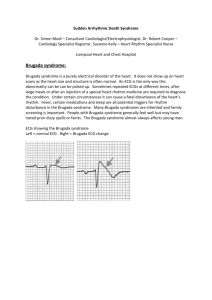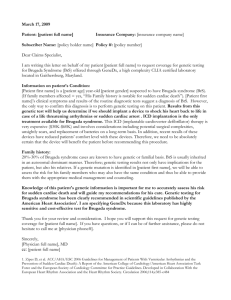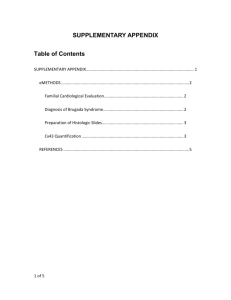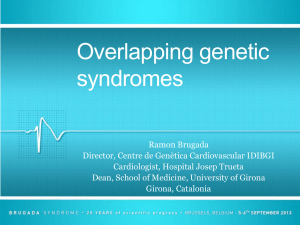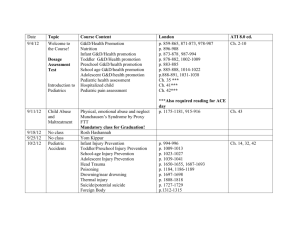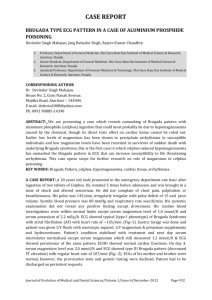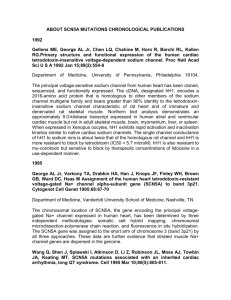Brugada Syndrome - North Colorado Med Evac
advertisement
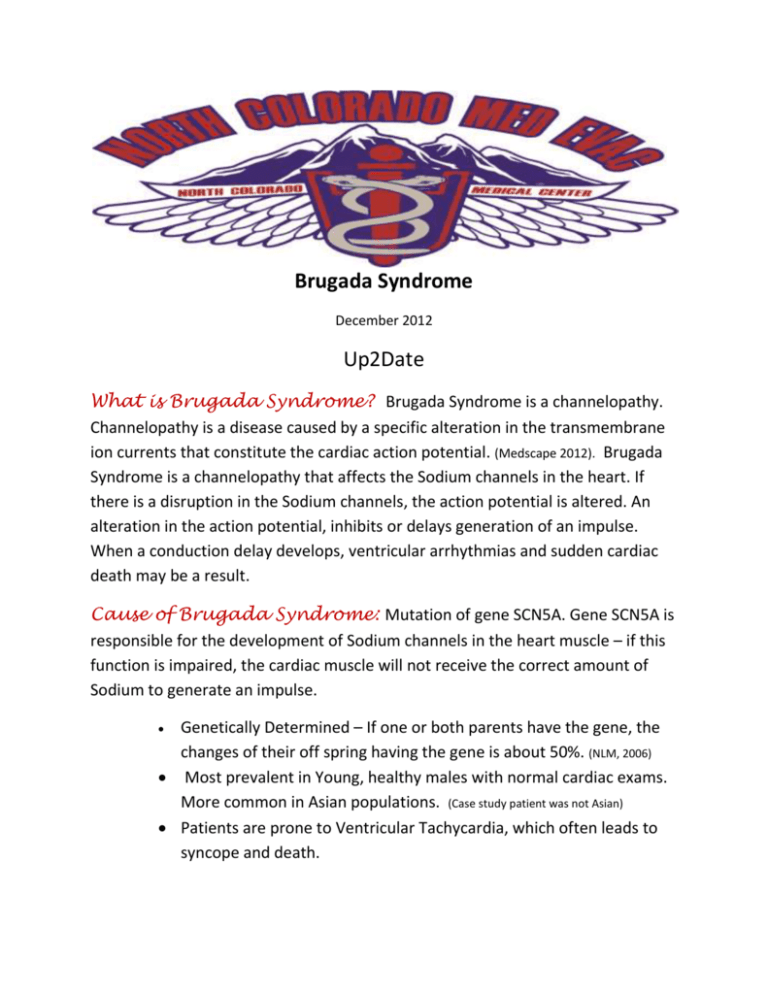
Brugada Syndrome December 2012 Up2Date What is Brugada Syndrome? Brugada Syndrome is a channelopathy. Channelopathy is a disease caused by a specific alteration in the transmembrane ion currents that constitute the cardiac action potential. (Medscape 2012). Brugada Syndrome is a channelopathy that affects the Sodium channels in the heart. If there is a disruption in the Sodium channels, the action potential is altered. An alteration in the action potential, inhibits or delays generation of an impulse. When a conduction delay develops, ventricular arrhythmias and sudden cardiac death may be a result. Cause of Brugada Syndrome: Mutation of gene SCN5A. Gene SCN5A is responsible for the development of Sodium channels in the heart muscle – if this function is impaired, the cardiac muscle will not receive the correct amount of Sodium to generate an impulse. Genetically Determined – If one or both parents have the gene, the changes of their off spring having the gene is about 50%. (NLM, 2006) Most prevalent in Young, healthy males with normal cardiac exams. More common in Asian populations. (Case study patient was not Asian) Patients are prone to Ventricular Tachycardia, which often leads to syncope and death. How does it present? Often presenting symptoms are syncope that is caused by cardiac arrhythmia. Other times patients have an episode of VT that progresses to a VF arrest. An estimated 4% of sudden cardiac deaths are related to Brugada syndrome. (Medscape 2012). Often times these patients present as a cardiac arrest without known cause. There is questions about whether channelopathies such as Brugada Syndrome may be the cause of unexplained deaths such as SIDS. EKG changes associated with Brugada Syndrome: Incomplete RBBB and ST elevation in one or two of the anterior precordial leads. How is Brugada Syndrome treated? Patients are treated with the placement of an AICD. Assuming they survive the initial event. Some follow up on the case review for the month: This patient was found to have Brugada Syndrome, as well as possibly WPW. An AICD was placed. He will have further electrophysiology studies completed. The patient and his spouse will also have to make decisions about further testing for their two children. Patient was doing well after the AICD was placed and he was discharged home. REFERENCES Dizon J.M., Rottman J.N. et al Brugada syndrome. Medscape Reference. June 2012.Retrieved November 21, 2012 from http://emedicine.medscape.com/article/163751-overview Genetics Home reference: Brugada Syndrome. November 2006. Retrieved November 21,2012 from http://ghr.nlm.nih.gov/condition/brugada-syndrome Postema P.G. Brugada Syndrome. Retrieved November 21, 2012 from http://en.ecgpedia.org/wiki/Brugada_Syndrome
